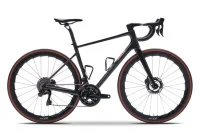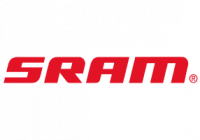Aero Position Optimization
A version![]() of this article was originally
of this article was originally
published in Triathlete Magazine
I bought my first triathlon bike last year and initially my lower back was giving me problems. I raised my handlebars some and my back discomfort has been a lot less. However, when I compare my riding position to what the pros are riding it doesn’t look as aerodynamic and I worry that I am sacrificing many of the benefits that I bought the bike for in the first place. Is there anything I can do to become more aero while remaining comfortable at the same time?”
Mike, MA
Dear Mike,
It is important to realize that your riding position is dynamic, individual and a work in progress. The position you can maintain efficiently and comfortably now, might be markedly different from the one you can maintain next year. Developing an optimal aerodynamic riding position, like achieving a PR (personal record), can take specific training, focus and time. Top riders work for years on developing and training their bodies to be able to maintain their most aerodynamically efficient position while remaining comfortable. Just like setting training goals, a focused long-term positioning goal should be set and reassessed periodically in order to build your optimal position without risking injury, discomfort or slower times.
Just like a coach can help you develop individualized training goals and help assess your progress, a professional fitter can do the same with your position. Using a program like the one outlined below, I have seen people who needed to ride in a relatively relaxed positon go to a pretty aggressive position successfully in under one season.
Some of the keys to setting and achieving positioning goals are as follows:
1) Build an effective baseline position that is as efficient as possible for where you are at now. Professional assistance is recommended.
2) Discuss limiting factors with your fitter that need to be worked on and set positioning goals for the future. I’ve outlined many of the more common limitations and some good ways to address them later in this article.
3) Work on overcoming your limitations.
4) Reassess. When you feel you have made notable progress on your limitations, set up a regular positioning reassessment with your fitter to track progress and to set new goals.
5) Repeat until you achieve your goal position.
So what are some of the limiting variables and how can they be overcome?
1) Flexibility: Restriction in flexibility and range of motion, especially in the hamstrings, hip flexors and muscles of the lower spinea (back), is one of the largest limitations for many people. A low aero position requires an excellent range of motion in these muscle groups. If your position is stretching a muscle group beyond its range, it will eventually start to hurt. Stretching, through activities like Yoga and massage, can loosen up tight muscle groups.
2) Strength: An optimal position, from an aerodynamics perspective, requires trained and toned muscle groups to enhance core stability and allow the shoulders and neck to remain comfortable. Focusing on these muscle groups, especially during the off-season when you are not on the bike as much, is important in helping the body maintain comfort in a more aggressive position. For example, many lower back issues can be improved by insulating the back from motion and strain by developing the abdominal muscles.
3) Genetics and Injury: An injury can result in a limitation (dormant or weakened muscle groups, decreased flexibility and strength…). A sports based physical therapist can often provide insight into how to balance out muscle groups and regain mobility and strength after an injury. Genetically, some people are more prone to injury or discomfort that can limit their ability to ride in an aerodynamically optimal position. Despite adequate flexibility and strength, in some cases (often involving acute sciatica), I have had riders who simply cannot ride in a low aero position.
4) “Life”: While triathlon is employment for a top professional athlete, for the rest of us, training, work, family, etc. must all co-exist as best as possible. Even if you can train the same number of hours or put in the same miles as a pro, you probably won’t be able to find the time to rest and recover that many top pros build into their schedule. Inadequate rest and recovery can limit your strength, and endurance while also increasing the likelihood of injury. A good coach can help create a workout schedule that is reasonable for your lifestyle and goals to help you get the most out of the time that you do have. If you could use help building a more balanced lifestyle in general, while still competing to your potential, consider a sports based Life Coach. Life Coaches can help busy people bridge the gaps between all their commitments to create a more balanced lifestyle that addresses all aspects of their lives – athletic and beyond.
Regardless of where your position and limitations are at now, do not feel that you are giving up all opportunity to ride fast because you are not as low as many professionals. Some of the fastest bike riders in triathlon, Jürgen Zack for example, have limitations that keep them from going as low or being as aero as they could otherwise, yet they still can ride quite fast. I’ve had as many riders improve their speed and endurance by placing them in a more relaxed position that addresses their limitations and helps them be more comfortable in a maintainable aero position as I have by placing riders without limitations into aggressive aero positions. In sum, your position needs to address your individual circumstances. Trying to “train through” an uncomfortable position, or force your body to do something it cannot do comfortably, will just make you slower.
Work on your limitations, be patient and keep riding.
Ian









